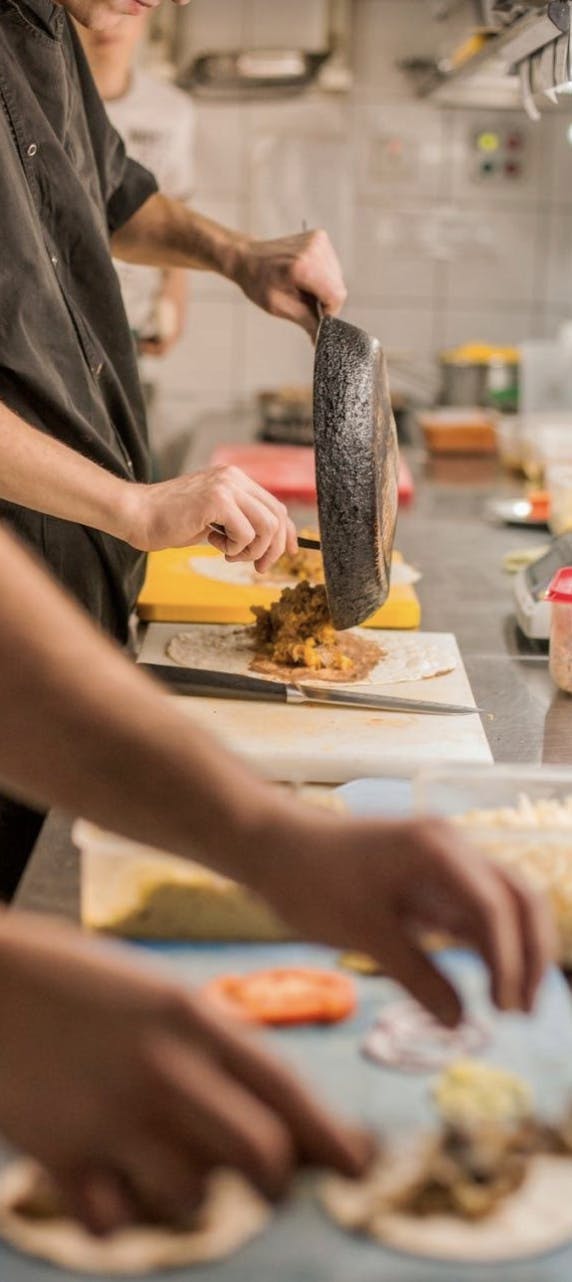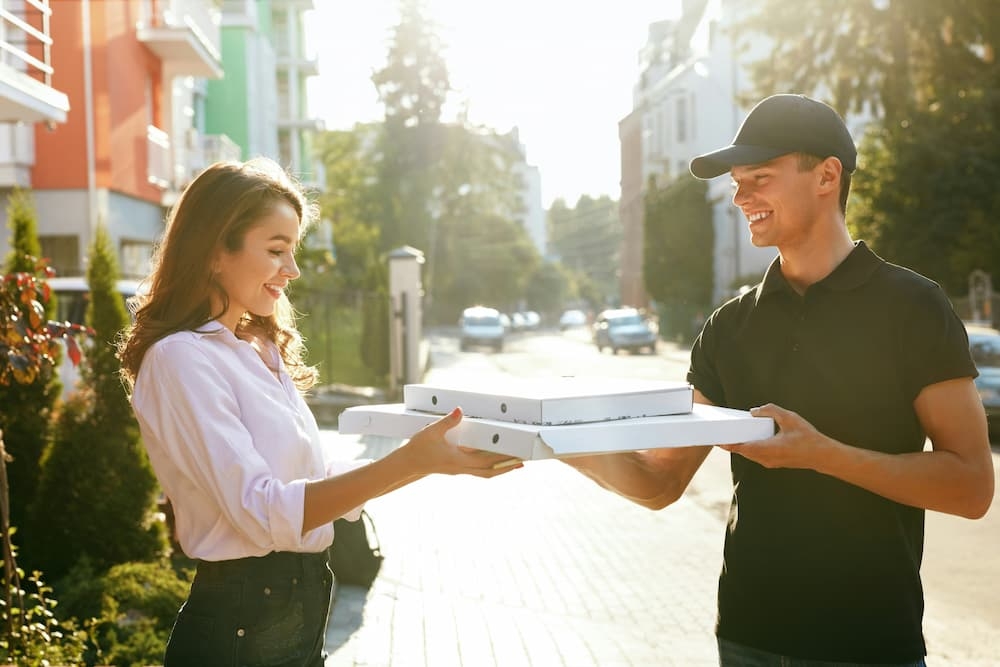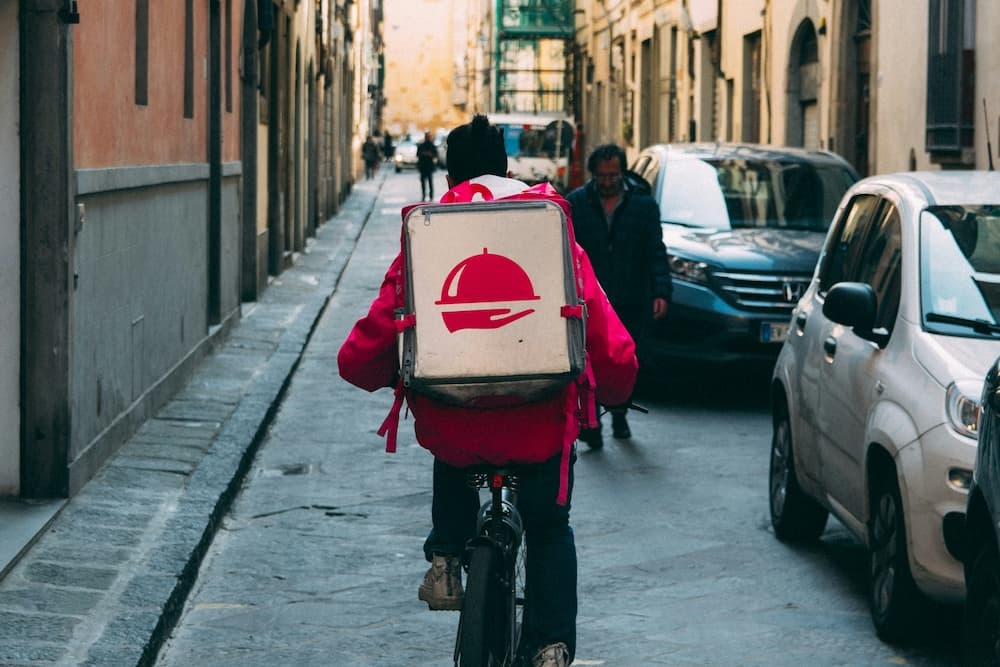Transform your dark kitchen with smart online ordering solutions
Table of Contents
CloudKitchens
How many tacos can be delivered from a 1000sqft restaurant?
The same amount as a 200sqft ghost kitchen.
The rise of online ordering has transformed the food industry, with dark kitchens emerging as key players in this evolving landscape. Unlike traditional restaurants, dark kitchens operate exclusively for delivery, and it is essential to make optimized online order strategies for success.
In this guide, we’ll explore proven strategies, tools, and best practices to help you maximize online orders and grow your dark kitchen business.
Why online orders are the lifeline of dark kitchens
Dark kitchens depend entirely on online orders to generate revenue. Without a physical storefront, their success hinges on effective online presence, seamless order fulfillment, and exceptional customer satisfaction. Online ordering enables dark kitchens to:
- Expand market reach: Deliver to a broader audience without geographical limitations.
- Reduce overhead costs: Avoid expenses associated with dine-in services.
- Adapt to customer behavior: Meet the growing demand for convenient and fast food delivery services.
However, high competition and customer expectations make it crucial to have an optimized online order strategy.
Top online order strategies for dark kitchens
To thrive in the competitive online food delivery market, dark kitchens must focus on the following strategies:
1. Adopt an efficient online ordering system
An effective online ordering system is the backbone of your operation. It should be:
- User-friendly: Provide an intuitive interface for customers to place orders quickly.
- Integrated: Sync seamlessly with your POS (Point of Sale) system, inventory management, and delivery logistics.
- Scalable: Handle high order volumes during peak hours without delays or errors.
Platforms like Otter offer robust solutions for restaurants to manage online orders efficiently.
2. Leverage multi-platform presence
Being listed on multiple delivery apps like Uber Eats, DoorDash, and Grubhub can significantly increase your visibility. However, relying solely on third-party apps can cut into profits due to high commission fees. To counter this, invest in:
- A dedicated website: Offer direct online ordering through your own platform to save on commissions.
- Social media integration: Enable ordering directly from Instagram, Facebook, or other social channels.
3. Optimize delivery logistics
Timely delivery is critical to customer satisfaction. Integrate your online ordering system with reliable delivery services or invest in your own delivery fleet. Key steps include:
- Using real-time tracking to keep customers informed about their order status.
- Partnering with third-party logistics providers to streamline last-mile delivery.
- Prioritizing route optimization to reduce delivery times and costs.
4. Use data to drive decisions
Analyzing data from online orders can provide valuable insights into customer preferences and operational inefficiencies. Focus on:
- Menu analytics: Identify top-performing items and promote them strategically.
- Customer insights: Tailor promotions and discounts to repeat customers or those with high order values.
- Operational metrics: Track order preparation and delivery times to improve efficiency.
5. Focus on customer retention
Retaining customers is more cost-effective than acquiring new ones. Strengthen customer loyalty with:
- Loyalty programs: Reward recurring customers with discounts, points, or free items.
- Personalized promotions: Use customer data to send tailored offers or recommendations.
- Responsive communication: Address customer inquiries and complaints quickly through chatbots or dedicated support teams.
How technology powers online orders
Technology is central to the success of dark kitchens. Here are some tools that can enhance your online order operations:
- POS integration: A unified system to manage orders, payments, and inventory seamlessly.
- Inventory management software: Avoid stockouts by automatically updating inventory levels as orders are placed.
- Kitchen display systems (KDS): Streamline communication between front-of-house and kitchen staff to reduce errors and speed up order preparation.
- Delivery management software: Track orders in real time and optimize delivery routes for faster service.
Read more: Restaurant Technology: Boost your business with the best technology trends
Best practices for scaling online orders
Scaling online orders effectively requires attention to detail and a focus on customer-centric practices. Here are expanded insights into the recommended best practices:
1. Enhance user experience
A smooth and intuitive user experience is critical to retaining customers and encouraging repeat orders. Here’s how to improve it:
- Mobile optimization: With the majority of orders coming through mobile devices, ensure your website or app is mobile-friendly. This includes responsive design, large tap targets, and minimal loading times.
- Fast loading speed: Studies show that users abandon sites that take longer than three seconds to load. Optimize images, minimize scripts, and leverage a content delivery network (CDN) to ensure speed.
- Simple navigation: Make it easy for customers to find what they’re looking for by categorizing your menu logically and including a search bar.
2. Upsell and cross-sell
Encourage customers to increase their order value through strategic prompts:
- Pop-ups for add-ons: Suggest complementary items (e.g., “Add fries and a drink for just $3 more!”) at checkout.
- Bundled offers: Promote meal bundles or combos at discounted prices to boost the average ticket size.
- Personalized recommendations: Use customer data to suggest items they’re likely to enjoy based on past orders.
3. Invest in packaging
Packaging plays a significant role in the customer experience and reflects your brand’s quality:
- Eco-friendly options: Use biodegradable or recyclable materials to appeal to environmentally conscious customers.
- Durability: Ensure that the packaging keeps food intact and at the right temperature during delivery.
- Branding: Include your logo and contact details on packaging to reinforce brand recognition and encourage repeat orders.
- Convenience: Offer packaging that is easy to open and reheatable when necessary.
Read more: Tips for proper food delivery packaging
4. Engage on social media
Social media platforms are invaluable for promoting your online ordering platform:
- Regular posting: Share high-quality photos of your dishes, customer testimonials, and behind-the-scenes content to build a connection with your audience.
- Respond to reviews: Address both positive and negative feedback promptly to show customers that you value their input.
- Targeted ads: Use social media ads to reach new customers in your delivery zones, showcasing promotions or new menu items.
- Interactive features: Utilize polls, Q&A sessions, and contests to engage with your followers and keep them interested in your brand.
Read more: Social media marketing guide & tips for restaurants
Final tips for maximizing online order revenue
To ensure your dark kitchen’s success:
- Regularly update your menu to reflect seasonal changes and customer preferences.
- Offer multiple payment options, including mobile wallets and cash-on-delivery.
- Monitor customer feedback and implement changes to address common concerns.
The key is to stay agile and continuously refine your online ordering process to meet evolving market demands.
Looking to revolutionize your dark kitchen operations?
At CloudKitchens, we understand the unique challenges and opportunities of running a dark kitchen. That’s why we offer a comprehensive suite of solutions designed to help you to maximize profits with the best solutions for your restaurant! From cutting-edge delivery technology to tailored marketing strategies, we’re here to support your growth every step of the way.
Ready to take your online orders to the next level? Contact us today and start revolutionizing your food business!
DISCLAIMER: This information is provided for general informational purposes only and the content does not constitute an endorsement. CloudKitchens does not warrant the accuracy or completeness of any information, text, images/graphics, links, or other content contained within the blog content. We recommend that you consult with financial, legal, and business professionals for advice specific to your situation.
More insights & stories
There’s more where that came from.
Get in the know and check out our additional insights


